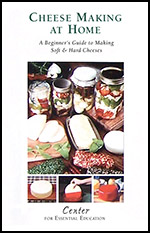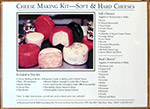Brazos Valley Cheese teamed up with the Ploughshare Institute to bring the very best instruction in home cheese making. We are pleased to introduce Rebekah from Brazos Valley Cheese, who discusses their artisan cheese, the differences between making hard and soft cheeses, and how we should get started in our own kitchens!
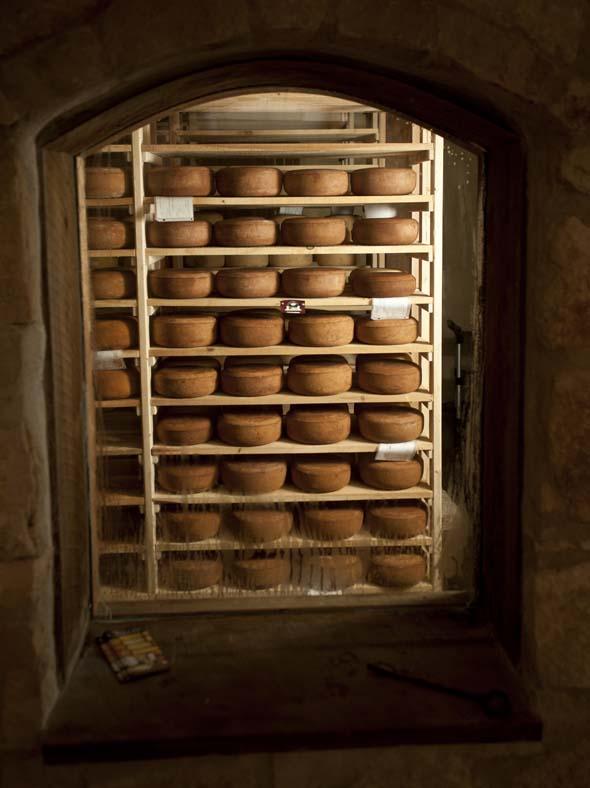
To learn more about Brazos Valley Cheese, please visit their website and read about their beautiful underground cave they use for aging cheese!
Could you explain the differences in some of the cheese you produce, in regards to both ingredients and treatment?
Here at Brazos Valley Cheese we produce hard cheeses and several brie-style cheeses. It’s amazing to me that almost all hard cheeses use the same four ingredients: milk, starter culture (either mesophilic or thermophilic), rennet and salt. It’s the amount of culture added and the process after adding the rennet that makes the different cheeses. For brie-type cheeses you also add a white mold powder in addition to the starter culture.
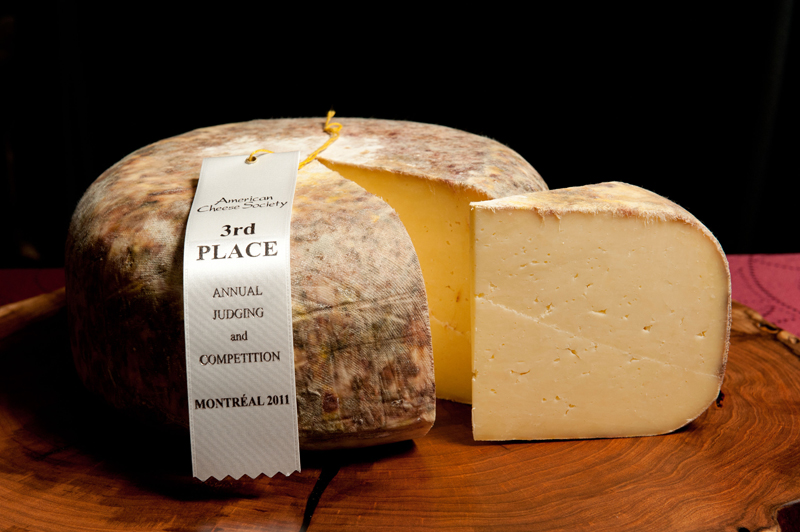
Good examples of two very different types of cheese we make are brie and cheddar, both of which are aged cheeses. For cheddar, we begin with fresh raw milk; we add starter culture and then rennet. After it has renneted, we heat it to 102º degrees and hold it for 15 minutes. At the end of the 15 minutes, we drain all the whey and allow it to slab. After cutting the slabs, we flip them several times over the next 45 minutes, which is the “cheddaring” process. After the slabs are ready, we use a french fry cutter to then cut the slabs into small pieces before mixing in salt. When the salt is all mixed in, we fill the molds and press the cheese overnight. The next morning, we wrap it in cheesecloth to prevent it from drying out and move it to our underground cave to allow it to age for the next 60 days.
Brie, on the other hand, is a very different process. Although it also starts with raw milk, we only heat it to 88º before turning off the heat and allowing the starter cultures and mold to ripen for 30-45 minutes before adding the rennet. After it finishes renneting, the soft curds are then stirred for 10 minutes. 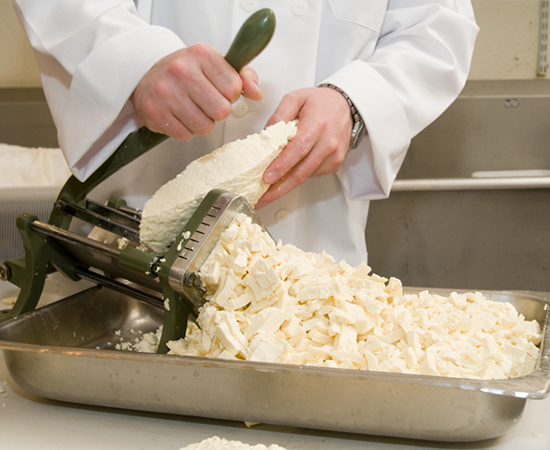 When the stirring is done, we drain both curds and whey into hollow molds and allow it to drain, without any pressure, for the next six hours or so before placing it in a cooler. In about four or five days, the brie will begin to grow a white mold coating. After the white rind is completely grown, it is wrapped in a special plastic and allowed to age for 60 days.
When the stirring is done, we drain both curds and whey into hollow molds and allow it to drain, without any pressure, for the next six hours or so before placing it in a cooler. In about four or five days, the brie will begin to grow a white mold coating. After the white rind is completely grown, it is wrapped in a special plastic and allowed to age for 60 days.
What kind of space consideration is necessary to make hard cheese at home?
The equipment and space needed for making your own cheese at home is not very much: a stove, stainless steel pot, spoon, dairy thermometer and a few cheese making ingredients, and you are on your way to making cheese.
For hard cheeses, you will need a cheese press in addition to the other supplies. The biggest thing to consider about making hard cheese at home is where you will age the finished cheese. I often suggest to my students that they consider buying a “dorm-size” refrigerator to start with. These small refrigerators hold about 6-8 wheels of cheese and can be bought fairly inexpensively. Cheese needs to age at 50º, so sometimes people also have basements or underground cellars that will work.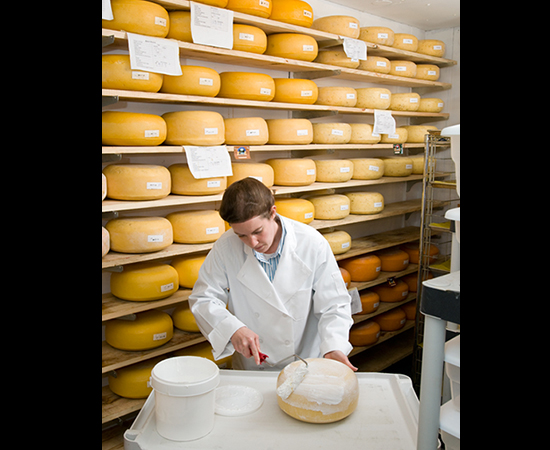
What are the food safety concerns with making hard cheese at home? After all, it is “bacteria”–is there unhealthy molds I should know about? What about kitchen safety tips for actually making the cheese?
Since you are providing the perfect environment for good bacteria to grow, you want to make sure that everything is clean when you begin. I usually rinse off all my equipment in hot water and wipe all counters off well. You can also spray everything off with a bleach solution, if you would like. You are introducing good bacteria into your milk, so it’s important to heat to the correct temperatures and make sure that everything is clean. Hard cheeses are aged for 60 days, during which time you will know if you have an unwanted bacteria growing. Your cheese will have a sour or yeasty smell and begin to swell, at which point you will want to dispose of it. However, as long as you have a clean milk source and use clean practices during your cheese making, you should be fine.
How much raw dairy is necessary to produce hard cheese–what is the approximate size of the end product based on how much raw milk was used?
Usually in hard cheeses, you average ¾ pound of cheese per gallon of milk used. This varies, though, depending on the kind of milk you use. Holstein milk is not as high in butterfat as Jersey milk, so your yield will be less. For soft cheeses, it is more like 1 to 1½ pounds of cheese per gallon, depending on what kind of cheese you are making.

How long have you been making cheese? What about Brazos Valley–can you tell us something about this cheese making company?
I have been making cheese for about 12 years now. I started when we had been given a goat, and I didn’t know what to do with all milk we then had. I started experimenting with different cheese recipes making small batches of cheese for my family. Around the same time a friend of mine started making hard cheese as well, so we would compare notes. A few years later, I begin teaching cheese making classes. In 2005, my friend and her cousin started our cheese making business, Brazos Valley Cheese, where I currently work in addition to continuing to teach classes. At Brazos Valley Cheese we craft a variety of all-natural cheeses made from milk from grass-fed Jersey cows. We make an average of about 1200 gallons of milk into cheese weekly, including our award-winning Eden, Brie and Cheddar. Our hard cheeses are then aged in our underground cheese cave.
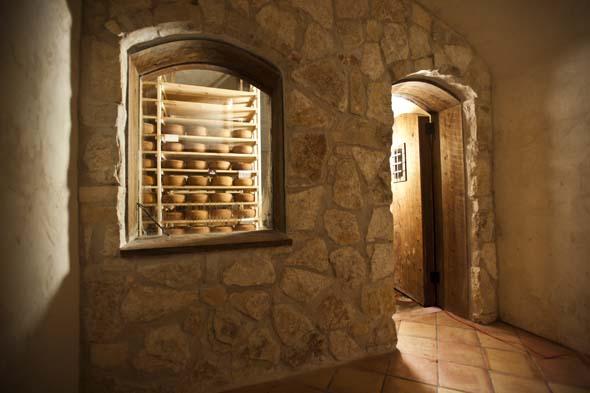
How would you suggest someone new at this begin?
I would suggest that to start out, purchase a book and start with the basics: butter, sour cream, feta, cottage cheese.
After mastering these, move on to mozzarella and then the hard cheeses.
Your first cheeses might not come out perfect, but keep trying. Before long, you will be making all kinds of cheese for yourself and to share!
Thank you, Rebekah, for taking the time to help us understand how attainable this skill is in our own kitchens!
–Chaya


